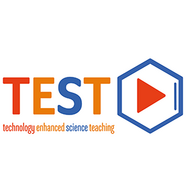
(View Complete Item Description)
This paper presents an innovative method of learners’ motivation and self-evaluation in the frame of School Education. This method was developed between 2017 and 2018, has been evaluated in a case study in 2018 and has been tested in an international project in Austria, Italy, and Spain in the last twelve months.
Active learning using technology is a common way to achieve good learning outcomes. On the one hand, the pre-knowledge of learners is often unknown. On the other hand, educators should create strict and well-defined descriptions of the taught competences. Finally, the learning success should be evaluated. The self-evaluation mandala is an aid for all these important issues and gives learners the direct feedback – based on the learners’ estimation – of the learning success.
Mandala is a graphic depiction which aims to increase the learners’ control, satisfaction and, ultimately, motivation. It describes the taught competences in terms of knowledge, skills, and attitudes. The depiction or graphical pattern with the competence description enables self-assessment to take place at a regular pace throughout a course. This is done as a formative assessment, to provide “just-in-time feedback” as well as at the end of the course in form of summative assessment.
The self-evaluation mandala forces teachers to create a well-defined description of the taught competence in terms of knowledge, skills, and attitudes. Learners use the mandalas to get informed about their future learning and give a pre-learning feedback of their pre-knowledge before starting their course. Finally, at the end of the course, the learners give feedback about their learning success using the same mandala. The comparison makes their development immediately visible.
The paper explains the idea of the mandalas, their use and implementation in practical teaching. It presents a study of the successful implementation in school education (with students at secondary high school level) from several European countries. This study was performed as a research part in the frame of the ERASMUS+ project “Virtual Teachers’ Toolbox VTT-Box” 2017-1-ES01-KA201-038199 in the years 2018 and 2019.
Material Type:
Reading
Authors:
Ebba Ossianilson,
Michail Kalogiannakis <mkalogian@hotmail.com>,
Peter Mazohl


